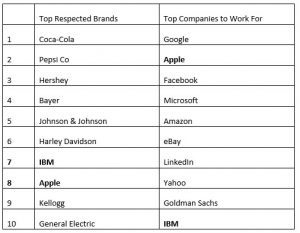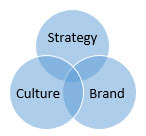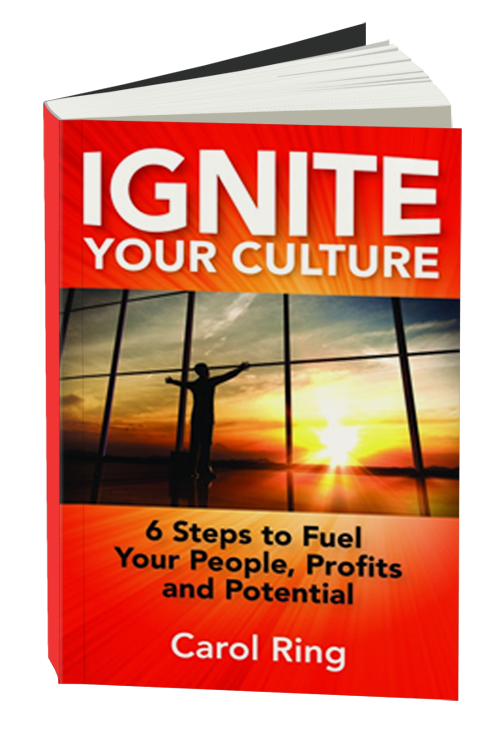Most of us are familiar with management guru Peter Drucker’s quote “Culture eats strategy for breakfast.” Strategy is not the only course that culture nibbles on however. Your culture also loves to gnaw away at your brand.
The obvious bite
 If you have a well-aligned culture and brand then your customers will trust you and be loyal. However, if your brand promise says one thing and your culture delivers another, the result is less than desirable. “Fly the friendly skies,” promised United Airlines. That is until you try and get reimbursement for a guitar that was broken by baggage handlers. This was David Carroll’s experience. After a long and drawn out negotiation, some of it through lawyers, that went nowhere he penned a song and recorded a video to share his frustration with the broken customer experience. This compilation went viral and United’s stock dropped 10% and it’s been estimated it lost $180 million in shareholder value as a result.
If you have a well-aligned culture and brand then your customers will trust you and be loyal. However, if your brand promise says one thing and your culture delivers another, the result is less than desirable. “Fly the friendly skies,” promised United Airlines. That is until you try and get reimbursement for a guitar that was broken by baggage handlers. This was David Carroll’s experience. After a long and drawn out negotiation, some of it through lawyers, that went nowhere he penned a song and recorded a video to share his frustration with the broken customer experience. This compilation went viral and United’s stock dropped 10% and it’s been estimated it lost $180 million in shareholder value as a result.
The less-than-obvious nibble
In a recent study, BCBusiness and Ipsos tested brand strength versus talent attraction. Surprisingly, the most loved BC brands, such as Save-on-Foods and London Drugs, scored very low on the percentage who desire to work for these employers. BC Hydro and the Vancouver Canucks NHL hockey team rated relatively high on the brand index score and the percentage who desire to work for employer. The real winner was the Vancouver Airport which had a reasonably high brand index score and was also the highest-rated employer.
 In another survey of 15,000 millennials, Collegefeed asked the respondents to name the top three employers they’d like to work for. When these responses were matched up to CoreBrand’s most respected brands only two companies overlapped.
In another survey of 15,000 millennials, Collegefeed asked the respondents to name the top three employers they’d like to work for. When these responses were matched up to CoreBrand’s most respected brands only two companies overlapped.
Even when you expand the list to include the top 50 employers to work for, the only other top brand to get a match is General Electric.
Alignment of strategy, brand and culture
All of this to say a strong brand doesn’t necessarily translate into employee attraction, regardless how well the brand is trusted. In fact, only about 15% of those 15,000 millennials surveyed indicated that market leadership is something they look for in an employer. At the top of the list, almost 80% indicated that people and culture fit were the most important. If you’re relying on your customer brand to help bring in the talent you need, or retain your best employees I encourage you to broaden your perspective.
Of course, the ultimate trifecta is the alignment of strategy, brand and culture.
 According to Janet Rouss, Chief Brand Engineer at Get Real Branding, ““Your brand is the connector between your business strategy and the company culture. It is the missing link between your external image and internal experience. With more social transparency and increasing customer touch points, companies must integrate the brand experience into their culture. It’s an intrinsic piece that joins cultural values with your brand promise. This can be challenging for brands that rely only on communication agencies to make them look good on the outside. That image can be shattered by one bad customer experience, exposing the brand’s lack of integrity. Branding is your business. It’s essential to integrate it throughout your organization.”
According to Janet Rouss, Chief Brand Engineer at Get Real Branding, ““Your brand is the connector between your business strategy and the company culture. It is the missing link between your external image and internal experience. With more social transparency and increasing customer touch points, companies must integrate the brand experience into their culture. It’s an intrinsic piece that joins cultural values with your brand promise. This can be challenging for brands that rely only on communication agencies to make them look good on the outside. That image can be shattered by one bad customer experience, exposing the brand’s lack of integrity. Branding is your business. It’s essential to integrate it throughout your organization.”
If you want to attract top talent, drive customer loyalty and remain a sustainable and competitive business, make sure culture isn’t eating your strategy for breakfast or nibbling away at your brand during dessert.


